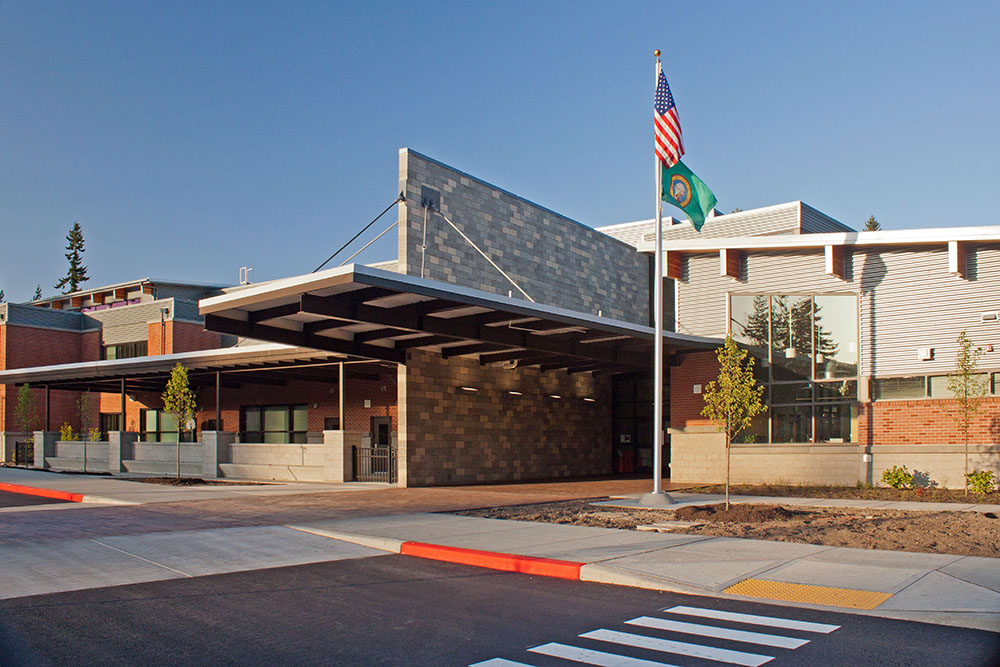Every school is special. Generations of kids have some of their most formative experience within the walls of their neighborhood elementary. Schools are the center of a neighborhood, in many ways. From classes during the day to community meetings in the evenings, there is always something going on. Schools are dispersed throughout the city in a way that few public buildings are. My neighborhood elementary is Everett School District’s Monroe Elementary. For me, this school is more special than most. It is a block from my house, and I drive past it every day. I also happen to be the structural engineer for the school.
In 2009, James Monroe Elementary was a school that was showing its age. Everett Public Schools reviewed the costs of bringing the building up to current standards, including a major seismic upgrade, and found that it was more cost-effective to replace the building. There were also community concerns with the layout, such as families parking across the street and dashing through traffic to reach the school. As a morning commuter going past the school, I knew that spot well. A better drop-off route would be appreciated by everyone. I couldn’t believe my luck when Dykeman Architects put us on their team to design the new school.
We learned a few things in the process. Some we already knew, in a way, but never fully appreciated:
1. A school represents our community. It is most people’s first experience outside the small world of home, sports, and day care. A good-looking school may seem like a “nice to have” rather than a key goal, but, in fact, a good facility affects public perception and student performance. Really. One new school that we recently helped design reported a 70 percent drop in disciplinary issues as compared to their old facility. People in pleasant environments take pride in the community and pride in themselves. Is there a line between a nice building and student performance? Yes, there is actually. Dykeman Architects’ talented team created a durable, functional, and beautiful building. This isn’t to say that level of detail was easy, but the finished product and the students’ achievement make it clear why it is so important to get it right. If you stop by Monroe Elementary sometime, take a look at the entry canopy; the offset canopy hanging on a network of rod supports is engineering at its purest.
2. A creative faculty makes the school live. As a member of the architecture/engineering industry, it is easy to give the building all the credit. That would, of course, be so very wrong. A dedicated staff uses a good facility like an artist uses their paint brushes. One of the teachers had a vision. She created a program to educate the students about the various technologies used in the school facility. Her class researched the various elements: beams, exposed piping and ducts, LED lighting, and key aspects of the space layout. The goal was to create educational signs that provide a summary, and can be scanned with a smart phone to get more detail. Being an engineer, I clearly love this idea. As part of this process, each designer was invited to talk about what they do and the principles behind the design. That was GREAT. I have never been asked to do anything like that; it was very rewarding. At the end of the class, the teacher let me know that one of the boys who asked a lot of questions hadn’t interacted in class much all year. It could be the topic, or it could have been the beginning, where I shared that I attended many different elementary schools as the son of a military family. His father was military too, and he had also seen more than his share of moves. Whatever the case, I hope the presentation played a small role in making him excited about school and maybe creating a future engineer.
In an engineering blog, you probably expected me to talk about steel behavior and concrete properties. I know those things and they are important. For the school, however, these are necessary project components, but they aren’t the goal itself. As a designer, it is an honor to be welcomed into the school’s community and to use my skills to help them create something great.


